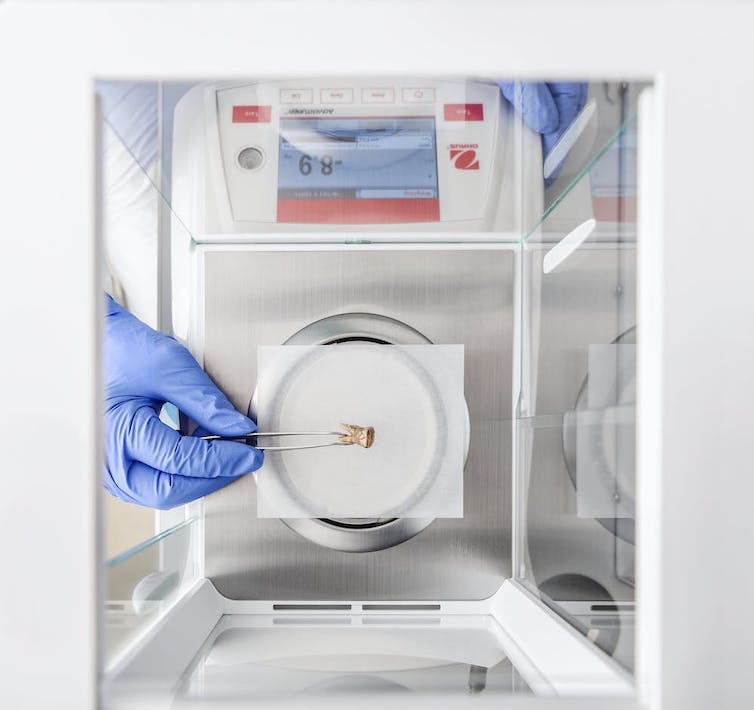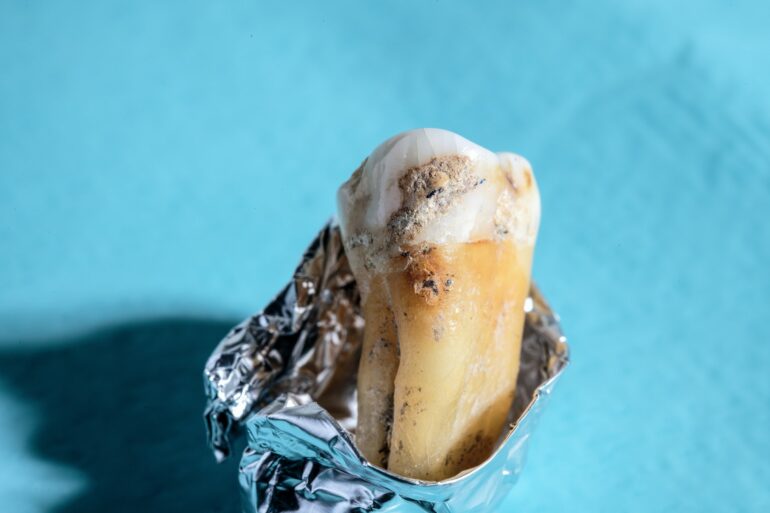Microorganisms – in particular bacteria – are skillful chemists that can produce an impressive diversity of chemical compounds known as natural products. These metabolites provide the microbes major evolutionary advantages, such as allowing them to interact with one another or their environment and helping defend against different threats. Because of the diverse functions bacterial natural products have, many have been used as medical treatments such as antibiotics and anti-cancer drugs.
The microbial species alive today represent only a tiny fraction of the vast diversity of microbes that have inhabited Earth over the past 3 billion years. Exploring this microbial past presents exciting opportunities to recover some of their lost chemistry.
Directly studying these metabolites in archaeological samples is virtually impossible because of their poor preservation over time. However, reconstructing them using the genetic blueprints of long-dead microbes could provide a path forward.
We are a team of anthropologists, archaeogeneticists and biochemists who study ancient microbes. By generating previously unknown chemical compounds from the reconstructed genomes of ancient bacteria, our newly published research provides a proof of concept for the potential use of fossil microbes as a source of new drugs.

A single ancient tooth preserves the genomes of millions of ancient bacteria.
Felix Wey/Werner Siemens Foundation
Reconstructing ancient genomes
The cellular machinery producing bacterial natural products is encoded in genes that are typically in close proximity to one another, forming what are called biosynthetic gene clusters. Such genes are difficult to detect and reconstruct from ancient DNA because very old genetic material breaks down over time, fragmenting into thousands or even millions of pieces. The end result is numerous tiny DNA fragments less than 50 nucleotides long all mixed together like a jumbled jigsaw puzzle.
We sequenced billions of such ancient DNA fragments, then improved a bioinformatic process called de novo assembly to digitally order the ancient DNA fragments in stretches of up to 100,000 nucleotides long – a 2,000-fold improvement. This process allowed us to identify not only what genes were present, but also their order in the genome and the ways they differ from bacterial genes known today – key information to uncovering their evolutionary history and function.
This method allowed us to take an unprecedented look at the genomes of microbes living up to 100,000 years ago, including species not known to exist today. Our findings push back the previously oldest reconstructed microbial genomes by more than 90,000 years.
In the microbial genomes we reconstructed from DNA extracted from ancient tooth tartar, we found a gene cluster that was shared by a high proportion of Neanderthals and anatomically modern humans living during the Middle and Upper Paleolithic that…



